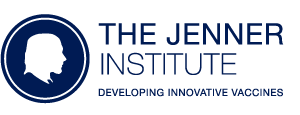Rabies glycoprotein engineering for improved stability and expression.
English S., Fedosyuk S., Orliacq F., Tem V., Taylor W., Alam N., Xiang ZQ., Thorley L., López-Camacho C., Ertl HC., Douglas AD.
Current rabies vaccines require multiple doses and are relatively expensive, limiting their accessibility. Novel low-cost vaccines capable of inducing a protective antibody response against the rabies virus glycoprotein (RVG) are therefore desirable. Structure-guided engineering of the antigen may enhance its qualitative or quantitative immunogenicity, as may transgene cassette optimisation in the case of vectored vaccines. We investigated the potential of these approaches for the design of improved rabies vaccines. We evaluated twelve candidate cassette designs. While codon optimisation enhanced expression in vitro, it did not translate into improved immunogenicity. Co-expression or RVG with rabies matrix protein (RVM) did not detectably affect expression or immunogenicity. Inserting a C-terminal trimerisation domain was detrimental to expression in vitro and did not improve immunogenicity compared to the wild-type comparator. We screened 72 mutant constructs for in vitro expression and pre-fusion stabilisation. Several mutants enhanced expression and/or pre-fusion stability at low pH. Combination of the previously reported H270P mutation with the H419L substitution achieved enhanced stability. An L271Q + H419L double mutant achieved the greatest positive effect upon expression. Neither of double mutants improved immunogenicity compared to wild-type RVG when tested using an mRNA vaccine platform. These mutant constructs may be of value for protein subunit vaccines, but full length wild-type RVG may be sufficiently conformationally stable and well-expressed for optimal immunogenicity of adenovirus and mRNA vaccines in mice.

